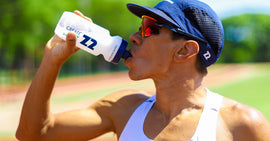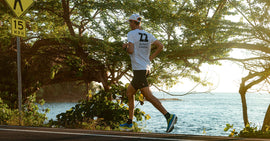Sports performance is in constant evolution. Annually, many records are broken, and what once seemed to be the limit becomes just another goal surpassed. This evolution can be attributed to improvements and technological advances in equipment, training methods, recovery, and, especially, nutrition and supplementation. More specifically, the increase in carbohydrate consumption before and during competitions.
In recent years, there has been a marked progression in performance in endurance sports, which can be attributed to nutritional factors and new concepts of carbohydrate intake, as the need for replenishment is greater and inevitable in longer activities.
It is no coincidence that the increase in carbohydrate intake aligns with the impressive advances in sports performance. Dietary trends come and go, but carbohydrates remain the kings of the performance world in endurance sports.
Currently, athletes are consuming between 90 and 140 grams of carbohydrates per hour. This is almost double what was recommended a decade ago.
Nutrition, especially the ability to consume carbohydrates (during training and competitions), has become so important that it can now be considered the third pillar of endurance sports, alongside training and technology.
When competing, more is more.
Supplementing with carbohydrates is not a new concept. What has changed are the strategies that athletes implement to maintain their glycogen stores. Specifically, the new formulations of carbohydrate-based dietary supplements that offer greater consumption and oxidation throughout the activity in a tolerable manner.
The mixture of different types of carbohydrates (different transporters) in specific proportions has altered the old "limit" of 60-90 grams per hour.
As an example, we have the champion Ironman 2022 athlete Reinaldo Colucci, who reports: “In the past, carbohydrate intake was based exclusively on a single simple carbohydrate, dextrose. Today, with the Z2 mix, in addition to better absorption, the taste is also different. Flavors like Z2’s Neutral facilitate greater consumption. In the beginning of my career, I consumed around 100g/hour, and today I can reach 140g/hour, and the improvement in performance is noticeable.”
The consumption limits have been shifted thanks to the new proportions of maltodextrin/glucose-fructose, which ensure the maximization of oxidation (everything consumed is used as energy at the highest rate).
The risk of "gastrointestinal disturbances" resulting from excessive consumption (overloading a single transporter) has been mitigated. The new formulations make it possible for the body to absorb absurd levels of sugars.
It is worth noting that to achieve the "maximization of oxidation," a process of adaptation and intestinal training must be undertaken.
Training to Eat, Eating to Train
Eating as intensely as modern high-performance athletes do requires practice. And this practice is where professional athletes are reinventing the way they think.
Athletes now fuel themselves during their training in the same way they do in their competitions. The trend of low-carb or fasting training remains relevant but is carefully periodized and structured within a training program.
Fasting or low-carb sessions stimulate the use of fats as fuel. It’s a practice that enhances athletes’ physiology throughout the day. However, it is the carbohydrate-rich sessions that break plateaus and build the ability to make pace changes that lead to victories. Performance.
For each low-carb training session, an athlete should undertake a high-intensity workout loaded with gels, bars, and energy drinks. These allow athletes to discover how much they can tolerate, "condition" their gastrointestinal tract for the carbohydrate frenzy of competitions, and help them achieve intervals at their maximum.
And this is how previous power thresholds and records fall.
Eat to Train, Eat to Run, Eat to Recover
The financial investment and scientific research in nutrition have been markers of the recent progress in sports performance.
A high-performance endurance athlete consumes 5,000 to 7,000 calories of energy per day, from breakfast to bedtime, which keeps them fueled for training, competition, and recovery.
The self-perpetuating carbohydrate cycle
The increasing speeds, paces, and powers cannot be attributed solely to the recent "carbohydrate revolution." However, the ability to tolerate more carbohydrates for training, competition, and recovery is creating a kind of self-perpetuating cycle.
Carb-loaded athletes can train more intensely and recover better. The result? They run faster.
Ironically, however, the intensity made possible by more intense nutrition can only be sustained with more fuel.
How far will the supply go? And how fast will athletes progress? Physiologists and nutritionists acknowledge that there is a limit to the "safe" intake of carbohydrates, but they do not believe that elite sports have reached it yet.
In the meantime, nutrition brands are evolving their product lines to meet the demand for more, and physiologists are testing athletes to see how far things can go.
It is only a matter of time before today's "carbohydrate limit" is blown away.


